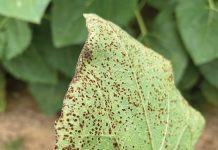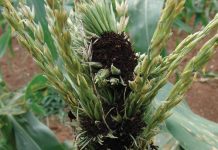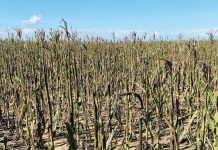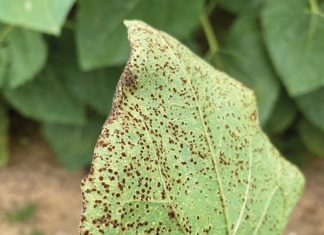
of the Free State
Sclerotinia disease epidemics are dynamic, varying with the host and environment. Effective management tactics can reduce these diseases. Producers worldwide face challenges with Sclerotinia sclerotiorum, causing stem and head rot.
The purpose of this article is to provide insights from producers, extension specialists, and researchers in the United States of America (USA). They discussed their experiences and strategies for managing this disease and furthermore shared risk scenarios, disease management approaches, and encouragement for fellow producers.
Low-risk scenario
Setting the scene
Andy Benson is a soybean producer from Wisconsin who grows approximately 810 ha per annum. He is situated in a cooler and wetter region on glacial till soils, with from well-drained silt loam to soils with a sandy texture, receiving annual rainfall of around 890 mm with snowy winters under normal season conditions. He has crop rotations with maize, soybeans, and winter wheat – and when possible followed by cover crops, including medium red clover, daikon radish, and purple-top turnips. No-till is typically implemented, except for strip tillage/fertiliser placement before planting maize.
Integrated disease management
Benson purchases new soybean seed every season, between 1,0 to 1,6 maturity. He says, ‘We believe the combination of crop rotation and no-tillage hold the secret to managing the level of infection for us. We do not fuss over row width and have planted ~19 cm (7,5’’), ~38 cm (15’’), and ~76 cm (30’’) rows interchangeably.’ However, a lower planting rate on soils with high water-holding capacity seems to reduce the risk where elevated levels of foliage are more likely to occur. Non-herbicide-tolerant soybeans are planted, resulting in a variable herbicide programme based on the weed pressure experienced in the season. Desiccants are not utilised, and no biologicals are used currently. Benson notes remembering ‘significant concerns 20 years ago before we began to practice some of these things. It has not been a goal to practice these things to reduce the incidence, but it has been a reality that our Sclerotinia levels are much reduced from historic levels over time.’
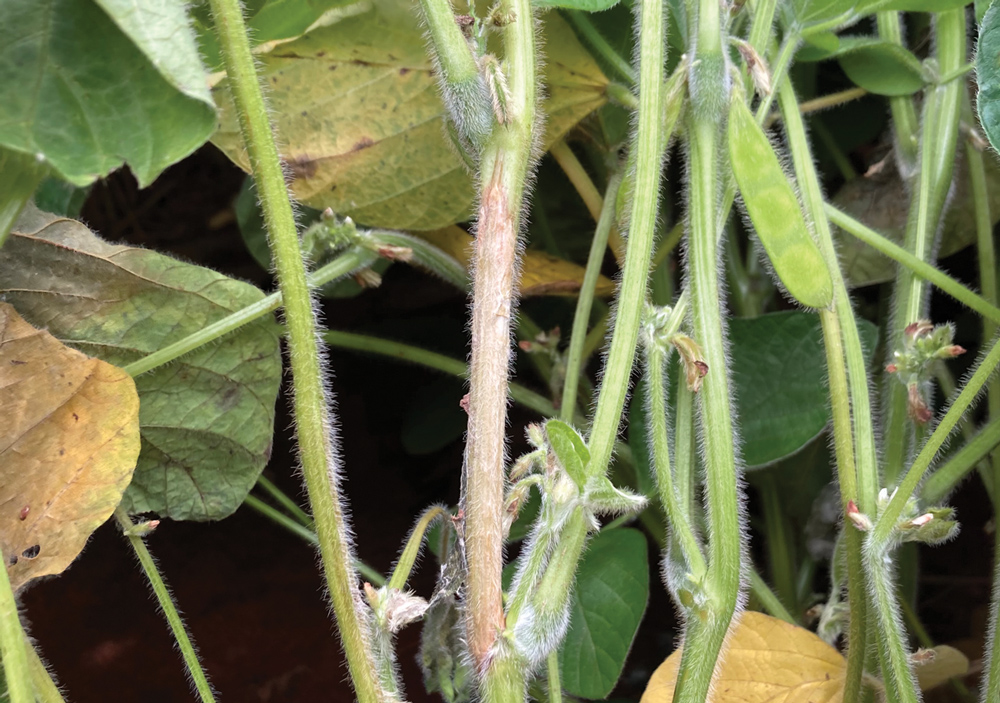
Encouragement
Varietal choice has a role in reducing the prevalence and incidence of long-term white mould (Sclerotinia stem rot) pressure. Selecting shorter-statured varieties plays a critical role in reducing the conducive environment in which white mould manifests. Benson believes, ‘There is not one single practice that we credit for managing the disease, but rather it is a series of choices that allow us to maintain a relatively disease-free situation.’
Moderate-risk scenario
Setting the scene
Pat Mulloly, a producer situated in southern Wisconsin, farms under high humidity conditions with dryland production as well as some irrigated areas. Crop rotations with maize and beans are practiced with a mostly no-till production system.
Integrated disease management
No farm-saved seed is utilised. In other words, newly purchased seed is used for each season, for planting at ~76 cm (30’’) row widths. Variety selection, rotation, and a reduced planting population have been vital to reducing the incidence of white mould on their farm. Although apothecia are actively scouted for, the producer takes steps in fields with a history of white mould to guard against the initiation of disease and follows through with preventative fungicide measures. The growing season of the beans is shortened with desiccants using registered herbicides. As far as possible, irrigation is kept off until the R stages.
Encouragement
Mulloly says, ‘We seem to be keeping white mould in check with these preventative measures as we have not had major outbreaks in some time.’
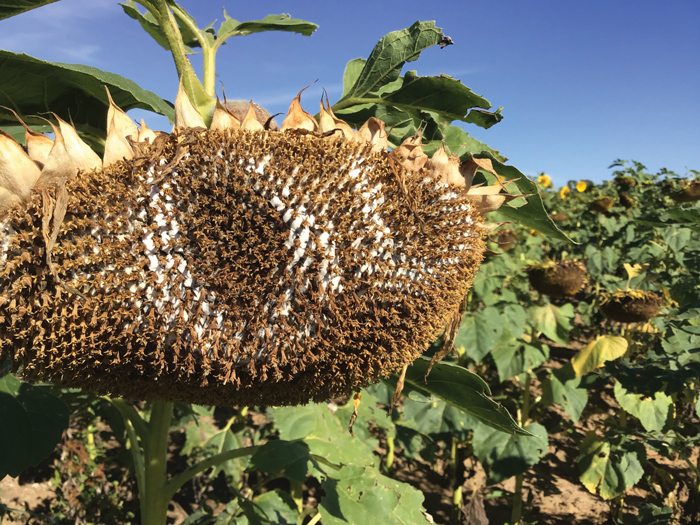
Photo: Dr Lisa Rothmann
Moderate to high-risk scenario
Setting the scene
John Swanson has grown sunflower on his farm in Minnesota since 1972, while soybeans have been planted since 1983. He is also an active industry member in his production region, where he was the last general manager of the seed division of Dahlgren before it was sold to Land O’Lakes. Under his management a full-time plant pathologist was on staff who conducted Sclerotinia research on varieties and agronomic testing to decrease Sclerotinia for canola, soybean and sunflower. Additionally, he has been part of the National Sunflower Research Committee for 25 years and is currently president of the Minnesota Sunflower Growers. His crop rotation practices include a four-year rotation with sunflower, maize, soybean and wheat. Swanson has noted that Sclerotinia can be a limiting factor for yields, especially in the years where plants stay wet for a 24-hour period during pollination. He has experienced 50% and 70% yield losses from Sclerotinia in soybean and sunflower, respectively.
Integrated disease management
Over the last ten years Swanson has practiced no-till or strip-till, depending on the farm’s needs. He avoids rotating sunflower in the soybean fields and rotates every other year with maize. He tries to select the most tolerant hybrids and varieties available and makes the selection by noting Sclerotinia tolerance responses from several locations in the USDA-ARS trials. He is planting a ~56 cm (22’’) row width with reduced sunflower populations to ~46 950 plants/ha (19 000 plants per acre). Cover crops have been attempted but were unsuccessful in reducing Sclerotinia in the northern Minnesota location and short growing season after harvest. Fungicides have also been attempted but with limited success under their conditions. He believes the ‘most effective strategy is choosing hybrids and varieties with the best genetic tolerance’.
Encouragement
Swanson encourages producers by noting that during the last three growing seasons there has been limited Sclerotinia. This was due to planting more tolerant hybrids and no days where the plants were wet all day during pollination. Reducing Sclerotinia events subsequently lessens the build-up of sclerotia and minimises the risk for future disease occurrences.
Conclusion
Selecting tolerant varieties is a practice all three producers agree is vital to their success in management of the disease, in addition to reduced populations, using no-till or strip-till practices, crop rotations with maize and avoiding successive soybean-sunflower rotations. Discussions with them highlighted the fact that they are engaging in a similar battle against Sclerotinia disease as South African producers. As a personal observation, producers in the USA as well as in South Africa are passionate about their crops and connecting with industry partners, grower communities, extension specialists and researchers. Through these engagements we can understand various production and Sclerotinia management scenarios and build a programme which is best suited for a farm’s specific needs.
In efforts to understand and implement Sclerotinia disease management, the following is important:
- Tactic selection requires consideration of the regional growing conditions and environment. For example, cover crops, biological control and fungicides may vary in their efficiency across farms.
- The producers’ experience as well as the knowledge of their farm are critical. Adjusting plant populations (row widths) within the context of the region or even farm conditions can be a useful tool. Scouting of the pathogen before disease symptoms are seen is critical for the timing of fungicide management.
- Availability of and access to technology, such as tolerant varieties and active ingredients/agents. Planting recently purchased or tolerant varieties and knowing which fungicides are effective and profitable.
- The integration of tactics is critical to reduce the risk of disease establishment and mitigating losses. When integrating tactics, it is important to keep in mind the first point in this list.
Appreciation
Thank you to the US producers Andy Benson, Pat Mulloly, and John Swanson, as well as local producer Jantjie Randell for their willingness to participate and share their experiences managing white mould. The author’s appreciation also goes to Dr Damon Smith (University of Wisconsin-Madison), Dr Wade Webster (North Dakota State University), Dr Febina Mathew (North Dakota State University), and Dr Megan McCaghey (University of Minnesota) for discussions on Sclerotinia management and for connecting us with the producers.
Local success
Jantjie Randell, a producer in Mpumalanga, South Africa, has been successful in managing Sclerotinia stem rot using wider rows. Randell engaged with Dr Godfrey Kgatle and stated that yield was not impacted by wider rows on his farm. The purpose of wider rows is to delay canopy closure until pods have formed. Please feel free to reach out to Dr Kgatle with your story on achieving success against Sclerotinia. Have you practiced wider rows or lowered plant populations? Which fungicides have provided your crop with some protection? We are curious to understand the effect of wider rows under different environments, to explore if soil moisture and other parameters are driving a less conducive environment for the pathogen to thrive.
Dr Kgatle can be reached by sending an email to Godfrey@grainsa.co.za.



